Icherisheher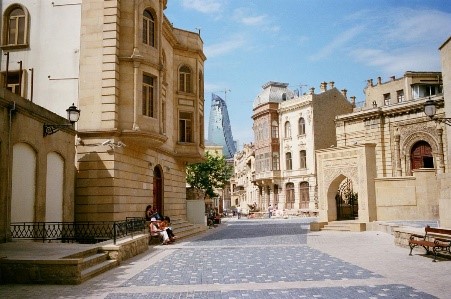
It is located in the center of Baku in a 22 hectares area and is surrounded by fortress walls. A number of museums, 18 hotels, over 100 trade and catering facilities operate in Icherisheher. Icherisheher together with the Maiden Tower and the Palace of Shirvanshah’s were included in the UNESCO World Cultural Heritage list in 2000.
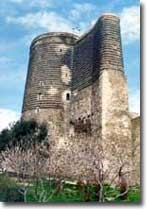
Maiden Tower
It was constructed in the XII century. The castle built for passive defense began to function as a museum in 1964 and was included in the UNESCO World Cultural Heritage list in 2000.
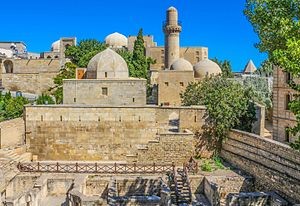
Shirvanshah Palace
The Shirvanshah’s Palace, which was a residency of Shirvan rulers, was built after the relocation of the capital to Baku as a result of the earthquake in Shamakhi in the XII century. The Palace complex consists of 9 buildings which are distinguished for their architectural structure and function. The “Shirvanshah Palace Complex” became the State Historical and Architectural Reserve Museum in 1954.
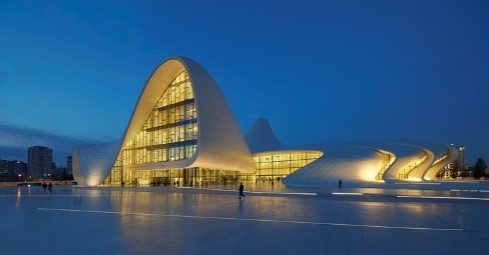
Heydar Aliyev Center
Construction of the center was started in 2007 by famous architect Zaha Hadid. The opening took place on May 10, 2012. In 2014, the Heydar Aliyev Center was awarded the Design of the Year. The Center includes an auditorium (congress center), a museum and exhibition halls. No flat lines were used in the building project of the Center. The structure of the building embodies postmodernism, as well as continuity and infinity. White color of the building symbolizes the clear future, as well as it is intended to highlight its special elements.
Heydar Mosque 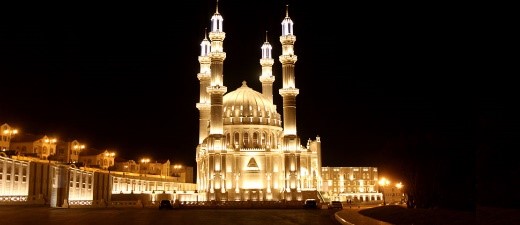
The mosque, which was built in 2014, covers a total area of 12,000 square meters. The facade of the building was decorated with special stones based on the Shirvan - Absheron architectural style and has four 95 m height minarets. The opening ceremony of the Heydar Mosque was held on December 26, 2014.
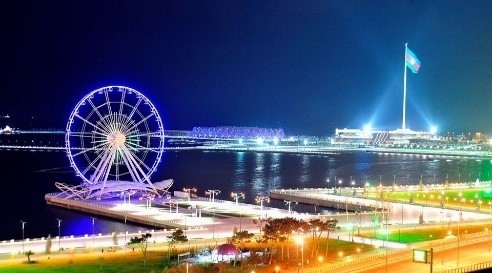
National Seaside Park
It is one of the main places for recreation and entertainment for the residents of the capital, as well as guests. The Baku Boulevard, second in Europe in terms of its size, has the status of National Park since December 29, 1998. At present, the length of the boulevard is 16 kilometers. Regular carriage and sea trips are organized here. Various carousels and attractions operate in the National Park.
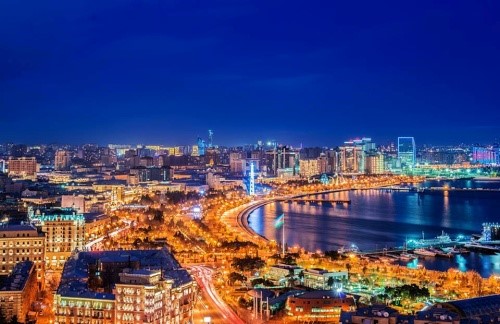
Highland Park
Highland Park, which is located in the center of the city, is considered one of the most beautiful parks of the capital. Another name of the park among the people is the observation deck. The uniqueness of this place is the possibility to view the city's fascinating landscape from here. Azerbaijan Independence Museum, as well as the Alley of Martyrs, where victims of the January 20, 1990 and the Karabakh war have been bruied, are located in the Highland park.
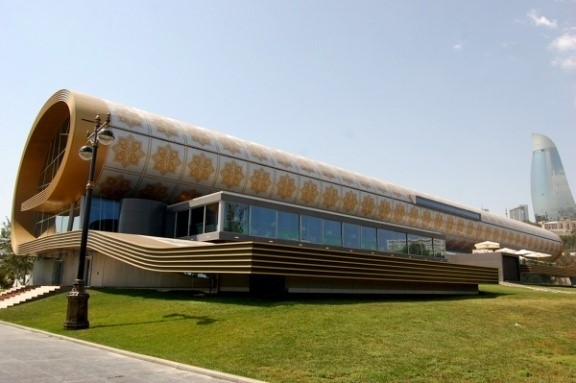
Azerbaijan Carpet Museum
Founded in 1967, it is the first museum in the world specialized in collection, preservation and study of carpets. More than 14 thousand samples of carpets, embroideries, clothes, copperwares, jewelleries, glass, wood and felt products are included in its collection. A four-storey new building of Carpet museum started to function in 2014. A wide range of hundred years old carpets, all directions of Azerbaijani carpet school are demonstrated in the museum designed by prominent Austrian architect Franz Janz. The building constructed in a unique style reminds rolled carpet. Currently, more than 13.300 exhibits are preserved in the exhibitions and stocks of the museum.
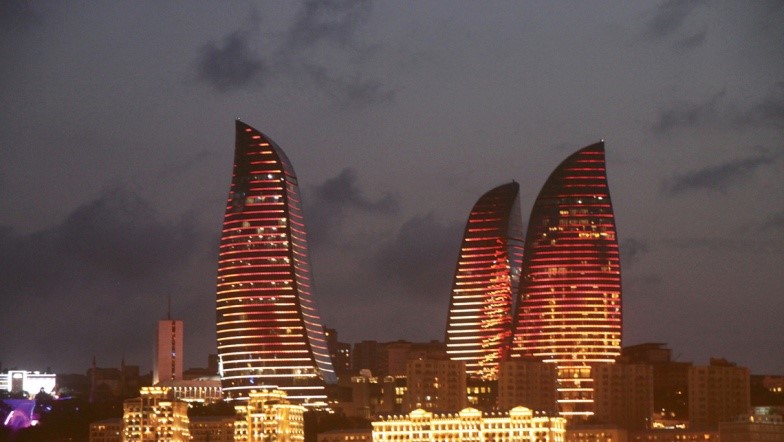
Flame Towers
It is a complex comprising of three skyscrapers. The appearance looks like a flame. The height of the Flame Towers, which is considered the highest building of Baku, is 190 metres and overall area is 235 thousand square metres. Hotels, apartments and offices are included in the building. The construction was finalized in 2012. The Flame Towers was declared as the winner of MIPIM Award 2013 “The best hotel and tourism center” which is the biggest innovation project in European real estate market.
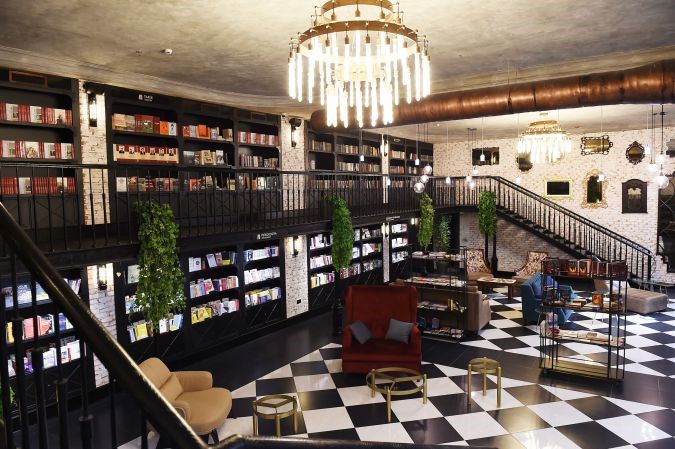
Baku Book Center
The Baku Book Center was established with the contribution of the Heydar Aliyev Foundation. The opening ceremony of the center took place on August 28, 2018. The area is 2500 square metres. There are the reading hall, corners for vision-impaired persons and children, places for various literary and cultural events, as well as the education corner for those who are involved in scientific activities in the Center. The bestsellers of world literature in Azerbaijani and other languages, rare albums on art, guide books for tourists, books on music and notes are sold in the Center.
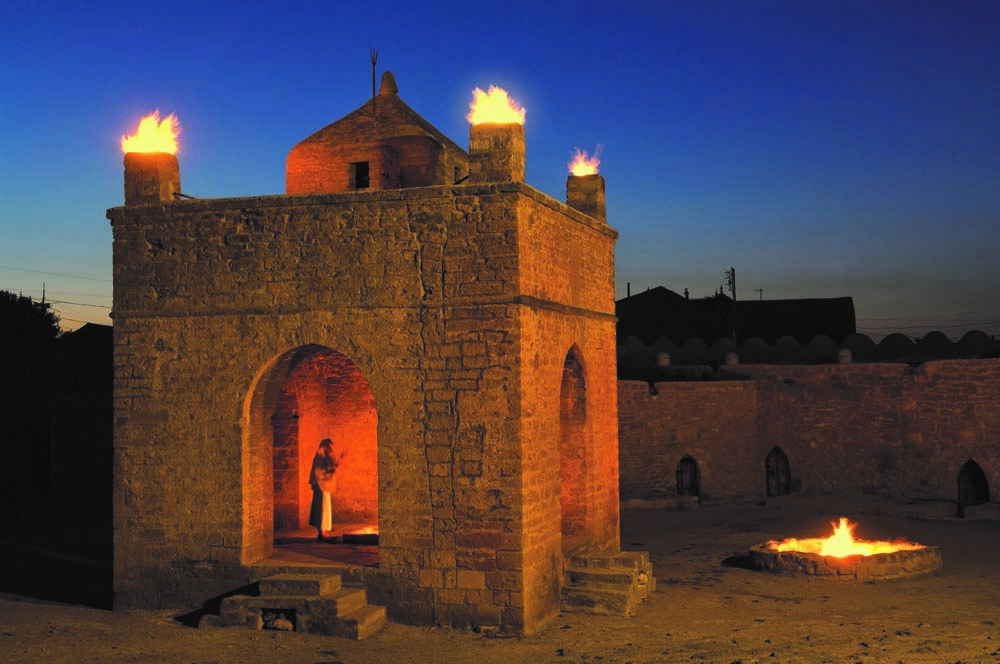
Ateshgah Temple
The Ateshgah is located in the south-eastern part of the Surakhany settlement on the Absheron peninsula. It was built in the 17th -18th centuries on the place of eternal flames where natural gas came to the surface. You will enjoy the marvelous dance of fire and wind in this never-ending eternal torch of the Land of Fire. The Ateshgah temple, which is considered one of the world's most miraculous historical sites for its unique nature, was named State Historical-Architectural Reserve in 2007.

Gobustan
If you want to travel to one of the oldest human settlements in the world, make your way to Gobustan monuments. Located at the slopes of the Greater Caucasus Mountains, reaching the Caspian Sea, 56 km south of Baku, the area of the Gobustan State Artistic Reserve is more than 3000 hectares. The majority of the monuments exhibited here belong to the Mesolithic era. The rock carvings, painted 10-12 thousand years ago, will take you to the past. Here you will be able to get acquainted with the lifestyle, life, occupation and culture of people living in the early days of human civilization. In the open-air museum rock paintings, drawings and the world's oldest calendar will astonish you. More than 6,000 rock paintings, 20 caves and settlements, 40 kurgans have been discovered in the reserve area, so far.
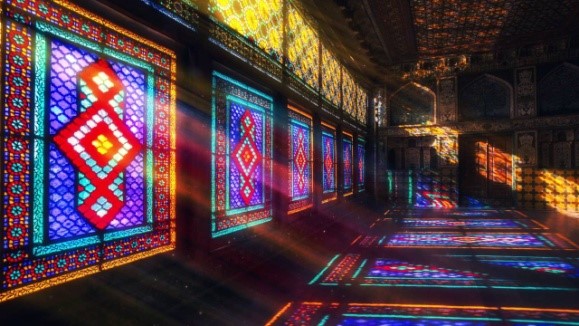
Palace of Shaki Khans
The city of Shaki, 305 km from Baku, makes unforgettable impressions on visitors with its nature, historical architectural monuments, as well as delicious cuisine. The Palace of Shaki Khans of XVIII century was built by the order of Mohammadhasan Khan. The architectural ensemble of the palace, its shabakas (latticework) please the eye. The main feature of the latticework art, which is still being transmitted from generation to generation in Shaki shows itself in all its perfection. So, not a single nail or glue was used in the building, the wood and glass pieces were fastened together. Ornaments, various patterns, carvings and color harmony add special color to the beauty of the building. Along with the walls of the rooms, the ceiling was also decorated in beautiful ornaments.
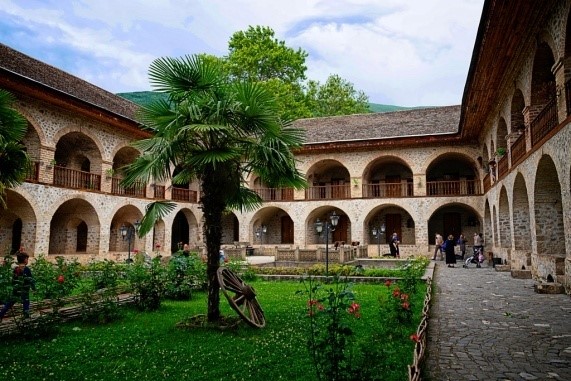
Shaki Caravanserai
Another valuable architectural monument of the 18th century is the Shaki Caravanserai. Two-storey building with deep basement is rich with original shades of the Oriental architectural style. It is possible to climb via the stone stairs from various directions of the spacious courtyard of Caravanserai to the second floor. This venue, which was a shelter for guests and merchants in the past, is currently being used as a caravanserai-hotel complex. There are all the conditions for the comfort of guests and tourists.
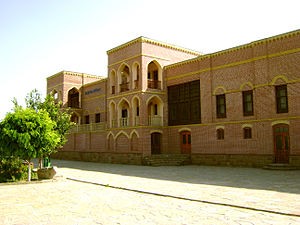
Palace of the Nakhchivan Khans
The monument built in Nakhchivan-Maragha architectural style was a dwelling house of Nakhchivan khans by the beginning of the twentieth century. The palace was built by Kalbali khan Kangarli, father of the last Nakhchivan khan Ehsan Khan at the end of the XVIII century.
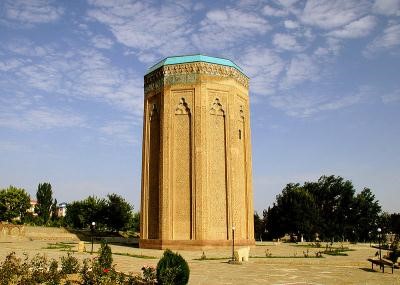
Momina Khatun Mausoleum
The mausoleum built by famous Azerbaijani architect Ajami Nakhchivani in 1986 is one of the most valuable monuments of the architectural school of Nakhchivan – Maragha. It is located in the historic center of Nakhchivan city - within the Atabays Architectural Complex. Momina Khatun Mausoleum is the only monument from that complex which has been preserved to this day. This Mausoleum is known as "Atabay Dome".

Yusif ibn Kuseyir Mausoleum
Yusif ibn Kuseyir Mausoleum is one of the oldest architectural monuments in Nakhchivan city. It is called "Atababa Mausoleum" by the people. According to the inscription on the tomb it was built by Ajami Abubakr oglu Nakhchivani in 1162.

Khinalig village
Located 57 km south-west of the city of Guba, 225 km from the capital, this village is distinguished by ethnographic uniqueness. It resembles an amphitheater on the top of the Caucasus Mountains. The name of Khinalig originates from its fascinating nature. This name indicates the color of the mountain after sunrise. The village, which is 5000 years old, surrounded by Gizil Gaya, Shah, Tufan and Khinalig mountains and located at an altitude of 2350 meters above sea level is one of the highest settlements in the world. Villagers speak the language of Khinalig which has a complex morphological structure. In 2007, Khinalig was declared State Historical Architectural Ethnographic Reserve.

Gusar
Gusar district is characterized as a land of mountains and valleys. The beech tree forest of the district, 20 percent of which is covered with forests, is specially protected. The Shahnabaz and Laza waterfalls astonish the visitors with its extraordinary scenery. Historical monuments, including Sheykh Juneyd Mausloeum, ancient mosques have been preserved in the district. The Bazarduzu (4466 m) and the Shahdag (4243 m) peaks of the Greater Caucasus are in Gusar district.
32 kilometers north of the city of Gusar, the Shahdag winter and summer tourist complex has entertainment and playgrounds, recreation areas and sports grounds for people to enjoy skiing and other winter sports, to have pleasant and meaningful leisure time.
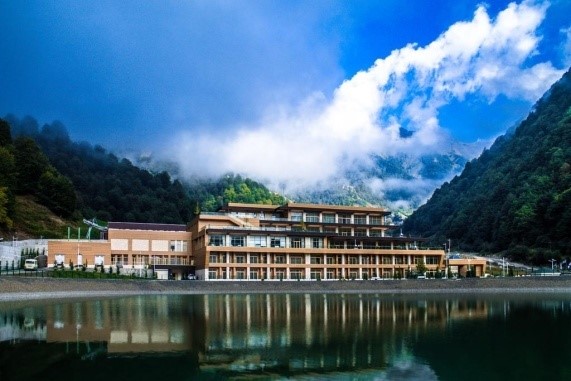
Gabala
The ancient city of Gabala, 225 km from Baku, was the capital of the Caucasian Albania state for 600 years. The Chestnut forest is the treasure of this region located at an altitude of 1000 meters above sea level. Gabala city, which is a source of pleasure in warm summer days with its mineral water springs and fresh water fountains, is a meeting place for classical music lovers. Each year Gabala hosts an international classical music festival in summer. Ancient fortresses, mausoleums, ancient tower of the IX-XI centuries, the History and Ethnography Museum in Gabala are among the must-see places for those who want to learn history.
The "Tufandag" Winter-Summer Tourism Recreation Complex, which has all the favorable conditions for relaxation in the mountainous area, is located about 4 km from Gabala city. This recreation and tourism facility provides a high level of recreation for local and foreign tourists throughout the year. The complex offers tourists a rope line tour throughout the year, skiing in winter, children's play ground, hotel and other services.
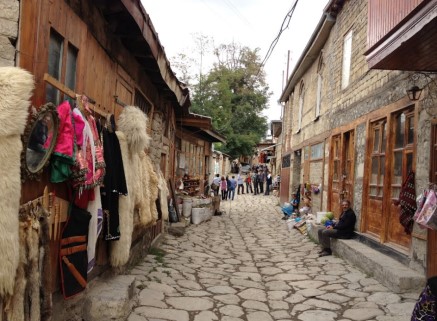
Lahij
Lahij settlement of Ismayilli district is one of the oldest human settlements of Azerbaijan. It is located on the southern slope of the Greater Caucasus range, 1505 meters above sea level. Lahij is surrounded by Babadagh and Niyaldagh ridges along the Girdiman River. Located between two mountains provides natural fortress condition to Lahij.
In the middle of the nineteenth century about 200 copper workshops were operating in Lahij. Lahij masters are also known for preparation of firearms (rifles, various types of pistols and so on) and cold weapons (daggers, swords, knives, etc.). Local mosques, water pipes and sewerages (gorevand), Girdiman Fortress have been protected in Lahij, which has been museum – reserve since 1980, craftsmenship traditions are continued.
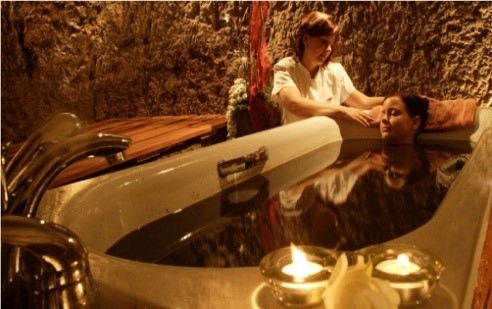
Naftalan
The Naftalan resort, located in the foothills of the Lesser Caucasus range is the most obvious example of the nature's love to mankind. Naftalan oil is used as an effective medicine for the treatment of many diseases. The resort is 320 km away from Baku and the winter here is mild and the summer is dry and warm. Naftalan oil is known all over the world as an effective remedy for nervous, gynecological, urological and skin illnesses, as well as liver diseases, treatment of joints.
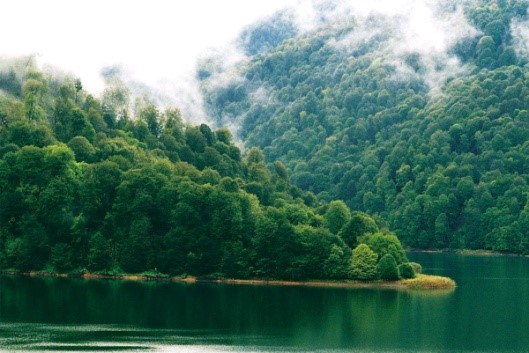
Ganja
Ganja is located 375 km west of the capital Baku. It is possible to travel to Ganja, the second largest city of Azerbaijan, by train, car or plane. Goygol, the source of inspiration for Azerbaijani artists and well-known for its beauty, is also located near Ganja. As a result of the earthquake in Ganja in 1139, Kapaz mountain blocked the Aghsu River. As a result, the famous Goygol, which is distinguished by its charming beauty, in particular the water's transparency, has emerged. It is currently a reserve, as well.
Located 45 km from Ganja, Maralgol is also a favorite place of recreation for visitors.
Ganja city, which has given the world the outstanding figures of Azerbaijani literature, outstanding thinkers and writers such as Nizami Ganjavi, Abul-Ula Ganjavi, Mahsati Ganjavi, Raziyya Ganjavi, Mirza Shafi Vazeh, was the cradle of science and culture of the East in XII-XIII centuries.
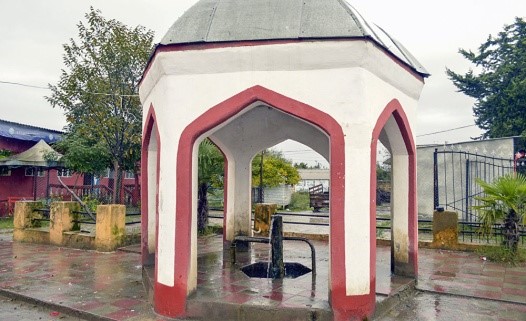
Burning Spring (Yanar Bulag) Complex
The complex is located in Archivan settlement of Astara district. The distinguishing feature of the spring is the burning water. Previously the case was accepted as a miracle, however scientific researches found out that the reason for the water to burn is the existence of sulfur in it. One of the interesting features of the water is that it does not harm the human organism if it is drunk while burning. Owing to its mineral composition it is used for treatment of gastrointestinal and skin diseases.
 The Republic of Azerbaijan
The Republic of Azerbaijan .png)
